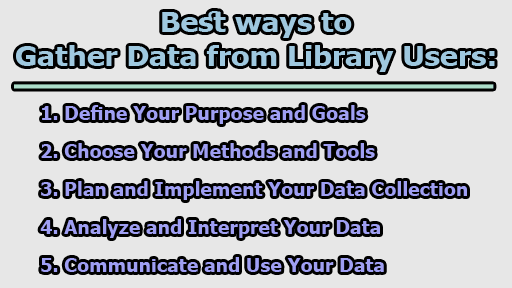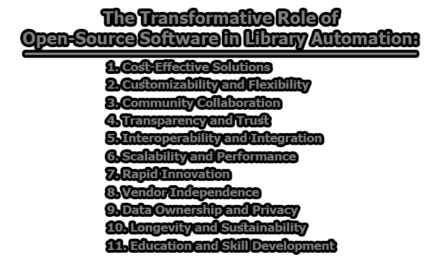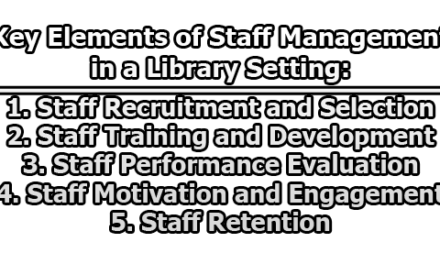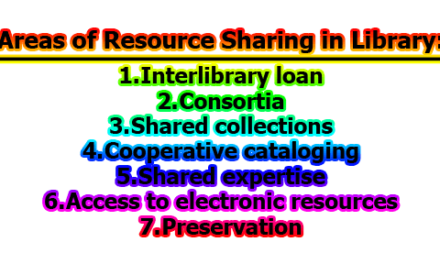Best Ways to Gather Data from Library Users:
Gathering data from library users is essential for improving library services, understanding their impact, and demonstrating their value to the community. In this article, we will explore the best ways to gather data from library users.
1. Define Your Purpose and Goals: Before embarking on data collection, it’s crucial to have a clear understanding of why and what you want to measure. Defining your purpose and goals is the first step. Ask yourself:
- What are the questions you want to answer?
- What problems do you aim to solve?
- What outcomes do you seek to achieve?
Having a specific and realistic purpose and goal will guide your data collection strategy and help you avoid collecting irrelevant or unnecessary data.
2. Choose Your Methods and Tools: There are various methods and tools available for gathering data from library users, and the choice depends on your specific purpose, goals, resources, and context. Some common methods include:
- Surveys: Surveys are a versatile tool for collecting a wide range of data, from user satisfaction to specific preferences and needs.
- Interviews: One-on-one or group interviews can provide in-depth insights and qualitative data.
- Focus Groups: These are excellent for exploring user perceptions, preferences, and expectations.
- Observations: Directly observing user behavior can provide valuable information about how patrons interact with library resources.
- Feedback Forms: Simple feedback forms can help capture immediate user feedback.
- Usage Statistics: Analyzing data on the usage of library resources can give insights into popular items or services.
- Analytics: Utilizing website analytics can offer data on user behavior online.
- Tests: Usability tests or A/B tests can help assess the effectiveness of specific library services.
Choosing the right tools that suit your methods is essential. This might include online survey platforms, paper forms, audio recorders, cameras for observations, or specialized software. Consider factors like accessibility, usability, reliability, security, cost, and time when making your choices.
3. Plan and Implement Your Data Collection: After selecting your methods and tools, you need to plan and implement the data collection process. Key steps in this phase include:
- Defining Sample Size: Determine the size of the population you want to study and select your participants accordingly.
- Designing Questions or Instruments: Craft clear and unbiased questions or instruments for data collection.
- Testing Methods and Tools: Ensure that your data collection tools are functioning as intended.
- Obtaining Consent and Ethical Approval: Obtain informed consent from participants and any necessary ethical approvals.
- Conducting Data Collection: Carefully follow your plan while collecting data.
- Storing and Managing Data: Securely store and manage collected data, ensuring privacy and confidentiality.
Following principles of validity, reliability, and objectivity is essential to maintain data quality and ethics throughout the process. Documentation and monitoring of data collection are crucial to address any issues or challenges that may arise during the process.
4. Analyze and Interpret Your Data: Once data is collected, the next step is to analyze and interpret it. This involves several tasks:
- Organizing, Cleaning, and Coding: Ensure that the data is well-organized, free from errors, and coded for analysis.
- Categorizing and Summarizing: Group data into categories and create summaries for a clearer understanding.
- Visualizing Data: Utilize data visualization tools to make trends and patterns more apparent.
- Applying Statistical or Qualitative Techniques: Use appropriate techniques to identify relationships, differences, or trends in the data.
- Check Validity, Reliability, and Accuracy: Confirm the quality and accuracy of your results.
- Be Aware of Limitations and Biases: Recognize the limitations and potential biases that may affect data analysis and interpretation.
5. Communicate and Use Your Data: The final step in the data collection process is to communicate and use the gathered data to inform decisions, actions, and communications. This involves:
- Reporting and Presentation: Create reports, presentations, or visual materials to communicate findings with stakeholders.
- Use Data for Improvement: Apply the insights gained to enhance library services.
- Demonstrate Impact: Use data to showcase the library’s impact and advocate for its value.
- Monitor and Evaluate: Continuously monitor and evaluate the effects of data-driven actions or communications.
In conclusion, gathering data from library users is a crucial process that requires careful planning and execution. By defining clear purposes and goals, selecting appropriate methods and tools, and following best practices throughout the data collection and analysis journey, libraries can better serve their communities, improve their services, and demonstrate their value in an ever-evolving information landscape.

Library Lecturer at Nurul Amin Degree College










